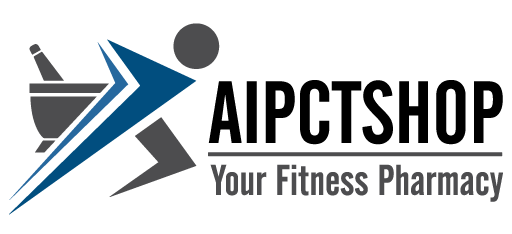There are so many medicinal drugs for the treatment of many different types of sicknesses it’s mind boggling. In this series of articles on medicines and health, you and I will discuss and discover some of these medicinal drugs used so that we know and understand why they are used, how they are used, their impacts and why they are such excellent products. We will begin with the generic drug Azithromycin with the brand name of Zithromax.
Why is azithromycin used as a medication drug?
Drugs are used as medications for many different types of bodily infections which are caused in many different ways. Azithromycin is no exception and while other drugs may cure the same illnesses that azithromycin also cures, it is the prescribed medication for:
• Bronchitis – Bronchitis is an infection of the main airways of the lungs (bronchi), causing them to become irritated and inflamed.
• Sinusitis – Sinusitis is an inflammation or swelling of the tissue lining the sinuses.
• Skin infections – Skin infections caused by viruses, bacteria, and fungi.
• Urethritis – Urethritis is inflammation of the urethra caused by bacteria. That’s the tube that carries urine from the bladder to outside the body.
• Cervicitis – Cervicitis is an inflammation of the cervix, the lower, narrow end of the uterus that opens into the vagina.
• Genital ulcer disease – Sexually transmitted diseases such as Hepatitis A, B, and C or HIV.
• Acute otitis – An infection of the middle ear, the air-filled space behind the eardrum that contains the tiny vibrating bones of the ear.
• Community acquired pneumonia – Pneumonia is an infection in one or both lungs caused by bacteria, viruses, and fungi.
• Mycobacterium avium complex disease – This is a group of bacteria related to tuberculosis that are common in food, water and soil.
• Pharyngitis or tonsillitis – Tonsillitis is inflammation of the tonsils.
The category of diseases mentioned are serious enough to warrant treatment and the perfect medication is Azithromycin. So if you suffering from them now and in the future you know the cure for your specific condition.
Before you actually receive the prescribed treatment you should know from the start that your drug dosage and in what form you should take it depends on:
• Your age
• The illness you have
• Your response to the first dose
• Other medical conditions you have
• The severity of your condition
Prescribed Dosages for Azithromycin
It’s most likely that the doses and different forms for taking an Azithromycin treatment are not exhaustive here, so you should consult your doctor for additional information you need to provide and receive.
Dosage for Bronchitis:
• Adults (ages 18 and above) – 500 mg once per day for 3 days. Your doctor can prescribe 500mg once on the first day and 250 mg once per day on day 2 through to 5).
Dosage for Sinusitis:
• Adults (ages 18 years and above) – 500mg once per day for 3 days
• Children (ages 6 months to 17 years) – 10 mg/kg of body weight once per day for 3 days
• Child (ages 0 to less than 6 months) – dosage shouldn’t be given to a child aged less than 6 months
Dosage for Skin Infection:
• Adults (ages 18 and above) – 500 mg taken on the first day and then 250 mg once per day on day 2 through to 5)
Dosage for Urethritis and Cervicitis:
• Adults (ages 18 and above) – If infection is not caused by gonorrhea – take 1 only gram dose; if infection is caused by gonorrhea – take 2 only gram dose.
Dosage for Genital Ulcer:
• Adults (ages 18 years and above) – the typical dose prescribed by a doctor is 1 only gram dose.
Dosage for Acute Middle Ear Infection:
• Child dosage (ages 6 months to 17 years) – 30 mg/kg of body weight of 1 only dose or 10 mg/kg of body weight taken once per day for 3 days. Doctor can also prescribe 10 mg/kg of body weight on the first day, and then 5 mg/kg per day on day 2 through to day 5.
• Child dosage (ages 0 to less than 6 months) – this drug shouldn’t be used in children of less than 6 months old.
Dosage for Community – Acquired Pneumonia:
• Adult dosage (ages 18 years and above) – 500 mg of 1 only dose on the first day and then 250 mg once per day on days 2 through 5.
• Child dosage (ages 6 months to 17 years) – children in this age group usually take 10 mg/kg of body weight of 1 only dose on the first day and then 5 mg/kg once per day on days 2 through 5.
• Child dosage (ages 0 to less than 6 months) – this drug shouldn’t be used in children who are younger than 6 months.
Dosage for Mycobacterium Avium:
Adult dosage (ages 18 years and over) – For treatment – 600 mg once per day, taken with the drug ethambutol. For prevention – 1.200 mg once a week.
Dosage for Pharyngitis or Tonsillitis:
• Adult dosage (ages 18 years and above) –The doctor may prescribe 500 mg of 1 only dose on the first day and then 250 mg once per day on days 2 through 5.
• Child dosage (ages 2 to 17 years) – 12 mg/kg of body weight once per day for 5 days.
• Child dosage (ages 0 to less than 2 years) – This drug shouldn’t be used in children younger than 2 years.
The Effectiveness of Azithromycin
In a study conducted by high ranking medical practitioners on the efficacy of Azithromycin their finding was expressed in very clear language which is quoted here. “We found that azithromycin was 96.1% (95% confidence interval, 91.1%–98.8%) effective in treating chlamydia infections, supporting its continued use. Azithromycin (1 g) cured 96% of uncomplicated urogenital chlamydia infections in detained youth, supporting continued use of this regimen.”
Conclusion
It’s clear that the drug azithromycin has gained an unshakable foothold in the medical world as an effective drug medication for all the diseases that have been listed in this article. There’s no telling how many more bodily diseases may appear in the future but its certain that a cure would be ready when the time comes, perhaps one that has been formed from azithromycin

